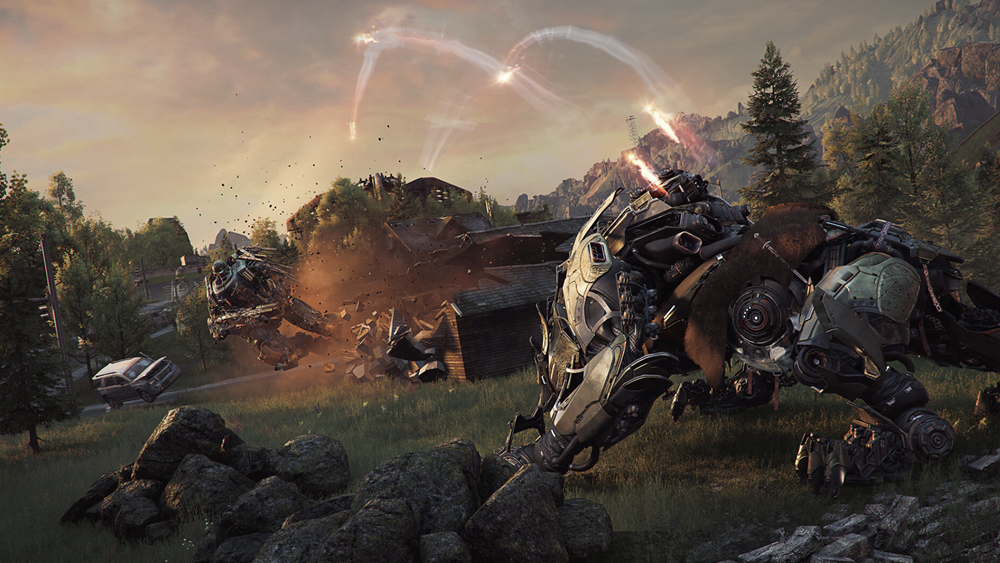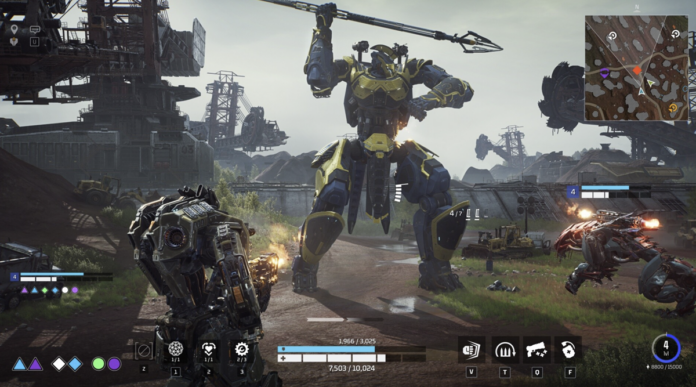When you hear the name Wargaming, your mind likely jumps to the iconic tank battles of World of Tanks or the naval clashes of World of Warships. However, with Steel Hunters, the studio is trying something fundamentally different: stepping out of history and into the realm of speculative science fiction. Instead of commanding tanks or ships, players now pilot massive, heavily armed mechs in a hybrid experience that combines elements of battle royale, extraction shooters, and hero-based design. On paper, this sounds incredibly promising—especially for fans of large-scale destruction and tactical gameplay. And to its credit, Steel Hunters makes a strong first impression. Its visuals are striking, the mech-on-mech combat feels weighty and satisfying, and the environmental destruction system is among the best we’ve seen in recent memory. Unfortunately, the appeal wears thin fast, and what lies beneath that polished surface is a game that feels undercooked, repetitive, and struggling to find its true identity.

Core Concept of Steel Hunters
The core concept of Steel Hunters is commendable: six teams of two players drop into one of three available maps, complete objectives, loot gear, and attempt to extract while surviving the onslaught of enemies—both human and AI. The idea of a mech-based extraction shooter should be thrilling, especially when combined with hero shooter elements. Each mech—called a “Hunter”—has its own distinct appearance, weapon setup, and abilities, functioning much like characters in a game like Overwatch, albeit bulkier and more methodical. At the start, players can choose from a roster of seven Hunters, with access to three immediately and the rest unlocked through gameplay. The variety in mech design is a standout feature, with models ranging from quadrupedal tanks to agile, beast-like units, giving the game a welcome sense of personality. Combat is generally enjoyable, offering long time-to-kill windows that favor strategy and positioning over twitch reflexes. It’s rare that a fight ends in seconds; instead, engagements feel deliberate and brutal, giving players time to make decisions. This weighty pacing sets it apart from faster, twitchier shooters like Call of Duty or The Finals, and for fans of more methodical gameplay, that’s a plus.
However, while the mechs feel good to control and the visuals provide a solid first impression, the actual gameplay loop falls apart under scrutiny. The only game mode currently available—Last Stand PVP—is repetitive, shallow, and fails to take full advantage of the game’s potential. A PVE variant exists, but it’s essentially the same mode with AI enemies swapped in, offering little in terms of variety or challenge. Matches often follow an identical rhythm: you drop into the map, shoot down the same uninspired drone enemies, loot a few basic resources, maybe encounter a single enemy team early on, and then slog your way toward extraction. Most encounters are isolated one-on-one fights, and large-scale chaos—the kind that makes battle royales exhilarating—is almost nonexistent. This results in matches that are technically short (averaging around 10 minutes) but feel much longer due to the lack of engaging content. Even with destructible environments that rival The Finals in spectacle, the game rarely places objectives in those exciting, destructible areas. Instead, you’re left wandering empty terrain or featureless fields, engaging in skirmishes that feel removed from the game’s most compelling assets.
Loot, too, is a problem. While loot should ideally create excitement and offer meaningful progression in an extraction game, Steel Hunters reduces it to a chore. Players collect orbs and balls that provide incremental stat boosts—slightly more shield here, a bit more damage there—but nothing changes how you actually play. It becomes a box-checking exercise rather than a compelling mechanic. Worse still, the game has already started laying the groundwork for microtransactions. While it’s technically free-to-play and currently devoid of real-money transactions, the infrastructure is there: multiple currencies, confusing systems like “Shards” and “Starfall,” and a dual-tier season pass that hints at a premium monetization model in the near future. And even if you can’t pay your way to the top just yet, the leveling system offers linear upgrades that outright improve your mech’s stats—creating the foundation for a future pay-to-win scenario. Leveling isn’t about customizing playstyle; it’s about becoming objectively stronger, meaning that new players could find themselves at a consistent disadvantage if monetization enters the fray.
Still, the game isn’t without bright spots. The revive system, for example, is elegantly designed. When one player goes down, the surviving teammate gets a temporary power boost and the opportunity to revive their partner, either with a kit or by surviving long enough. It’s a mechanic that hits the sweet spot between punishment and opportunity, keeping players engaged without feeling like death is an immediate game-over. Similarly, the actual moment-to-moment combat—when it happens—feels tactile and fun. The mechs are animated with convincing weight, and firefights are often strategic dances that require more than just good aim. The problem is that these fights are too few and far between. Most of your time is spent doing little more than traversing dull landscapes and farming low-effort loot. Server stability issues further sour the experience. On day one, many players—including the reviewer—faced persistent disconnections, freezing at the end of matches, and ping spikes that interrupted the flow of gameplay. While some of these issues were smoothed out over time, the presence of such instability in an otherwise polished-looking title is troubling.
At its core, Steel Hunters is a game with a ton of potential and not enough substance to realize it. The foundation is strong: great visuals, satisfying mech combat, solid moment-to-moment controls, and a creative identity that distinguishes it from other Wargaming titles. But potential alone doesn’t keep players engaged. The current content offering is simply too barebones. It needs more Hunters, more maps, more meaningful loot, and above all, more varied and compelling game modes. Right now, it’s an impressive tech demo pretending to be a full game. If the developers invest in improving the core gameplay loop, offering new ways for players to interact and compete, Steel Hunters could be something truly special. But in its current state, it’s difficult to recommend to anyone but die-hard mech fans willing to put up with repetition and incomplete systems.

Final Thoughts
Steel Hunters is a textbook case of strong ideas and slick execution marred by shallow content and a lack of cohesion. It’s a mech game with gorgeous destruction physics, tactile controls, and a distinct personality—but it’s also a game where every match feels the same, and loot lacks any kind of compelling appeal. While the game may evolve into something great over time, the current offering is more proof of concept than polished product. For fans of mech combat who don’t mind a bit of grinding and repetition, it might still be worth checking out. But for most players, Steel Hunters doesn’t yet justify a long-term investment of time or attention.


